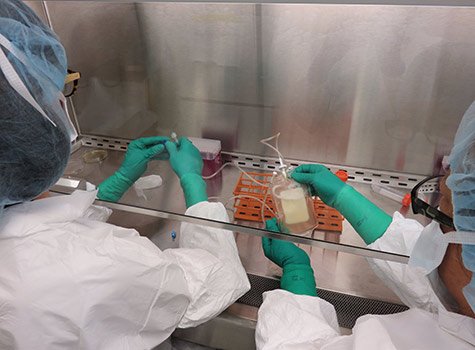With the help of the channels that distribute water and nutrients in plants, the research group at the Laboratory for Organic Electronics, under the leadership of Professor Magnus Berggren, have built the key components of electronic circuits. In an article in Science Advances, they show how roses can produce both analog and digital electronic circuits, which over the long term could be used, for example, to regulate the plant’s physiology.
Traditional electronics send and process electronic signals, while plants transport and handle ions and growth hormones. In organic electronics, based on
«Previously, we had no good tools for measuring the concentration of various molecules in living plants. Now we’ll be able to influence the concentration of the various substances in the plant that regulate growth and development. Here, I see great possibilities for learning more," says Ove Nilsson, professor of plant reproduction biology at the Umeå Plant Science Center and
Since the beginning of the 1990s, Magnus Berggren — professor of Organic Electronics at Linköping University’s Norrköping campus — has been researching printed electronics on paper. Now and then the idea of putting electronics into the tree itself cropped up, but research funders were indifferent. Thanks to independent research money from the Knut and Alice Wallenberg Foundation at the end of 2012, Professor Berggren could hire three researchers with new doctorates: Roger Gabrielsson, Eleni Stavrinidou and Eliot Gomez. The task was to investigate — with the help of the more senior researchers at Linköping University and the Umeå Plant Science Center — whether it was possible to introduce and even produce electronics in plants.
The answer, in other words, was yes. In just about two years, the research group succeeded in getting plants to produce both analog and digital circuits.
Mr Gabrielsson found the polymer
«We’ve produced the perfect measurement values, which show that it really is a fully functional transistor," Ms Stavrinidou says.
She has measured the conductive ability of the polymer from 0.13 siemens/cm all the way up to 1 siemens/cm.
 Mr Gomez used another method common in plant biology — vacuum infiltration — to send another PEDOT variant together with nanocellulose fibres into the foliage of the rose. The cellulose forms a
Mr Gomez used another method common in plant biology — vacuum infiltration — to send another PEDOT variant together with nanocellulose fibres into the foliage of the rose. The cellulose forms a
«We can create electrochromatic plants in which the leaves change color — it’s cool, but maybe not so useful," Mr Gomez says.
But what is otherwise a weakness of organic electronics — the cold and the wet — is solved by the plant when it encapsulates the polymer and protects it from wind and weather.
«It seems as if the polymers we use had been created for their function," Mr Gabrielsson states.
Professor Berggren sees an entirely new field of research:
«Now we can really start talking about ‘power plants’ — we can place sensors in plants and use the energy formed in the chlorophyll, produce green antennas or produce new materials. Everything occurs naturally, and we use the plants’ own very advanced, unique systems," he says.
«As far as we know, there are no previously published research results regarding electronics produced in plants. No one’s done this before," Professor Berggren states.

The research group at the Laboratory of Organic Electronics, from the left Daniel Simon, Roger Gabrielsson, Eleni Stavrinidou, Eliot Gomez and Magnus Berggren. Xavier Crispin is missing.
Article: Electronic Plants, Eleni Stavrinidou, Roger Gabrielsson, Eliot Gomez, Xavier Crispin, Ove Nilsson, Daniel T Simon, Magnus Berggren, Science Advances, DOI 10.1126/sciadv.1501136
Siemens is the SI unit for conductance, or conductivity.
http://www.liu.se/forskning/forskningsnyheter/1.660308?l=en
